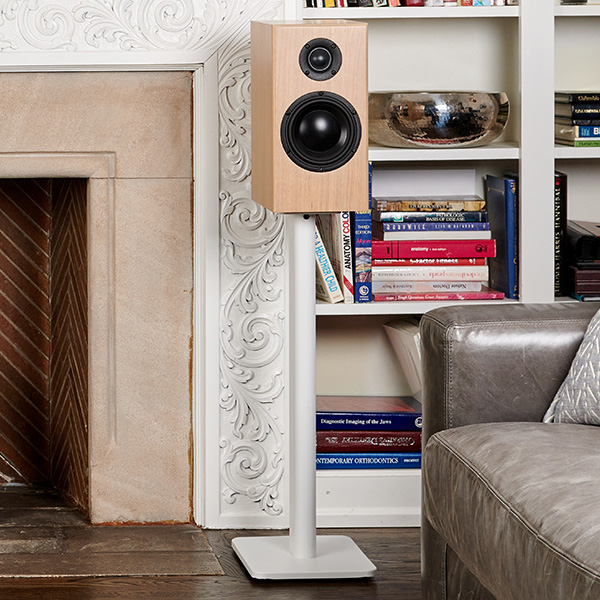
The debate between vinyl records and digital formats has been ongoing for decades, with passionate audiophiles and casual listeners alike weighing in on the differences. While digital audio has become the most convenient and accessible way to enjoy music, vinyl records continue to maintain a strong presence in the high-end audio community. But what exactly makes vinyl special? In this article we explore the advantages of vinyl records over digital formats and why they remain a preferred choice for many audio enthusiasts.
One of the most frequently cited advantages of vinyl is its warm, natural sound. Unlike digital formats, which rely on sampling rates and compression algorithms, vinyl records store audio in an analog format that mirrors the original sound waves more faithfully. This results in a richer, more organic listening experience, often described as having greater depth and warmth, especially in the midrange and bass frequencies.
While high-resolution digital audio formats (such as FLAC and DSD) have improved significantly, many listeners still find that vinyl reproduces a more lifelike and engaging sound.
Listening to vinyl is often described as a ritualistic experience. Unlike streaming or digital downloads, playing a vinyl record requires careful handling, placing the needle, and flipping the record mid-way through. This level of involvement fosters a stronger connection with the music, encouraging listeners to engage more actively with their albums instead of passively skipping through tracks.
Digital music formats, particularly compressed ones like MP3s and some streaming services, often suffer from dynamic range compression—a practice used to make music sound louder at the cost of reducing the contrast between the quietest and loudest parts of a recording. Vinyl records, particularly well-mastered pressings, often preserve a wider dynamic range, making the music sound more dynamic and expressive.
The convenience of digital formats often leads to playlist culture, where listeners shuffle through songs without experiencing an album as a cohesive work of art. Vinyl records, on the other hand, encourage listening to albums in their intended sequence, fostering a deeper appreciation of the artist’s vision. Many albums are crafted with a specific track order that tells a story or conveys a particular mood, and vinyl playback preserves this experience.
Unlike digital formats, which exist in the cloud or on a hard drive, vinyl records offer a physical and collectible aspect that many music lovers cherish. The large album covers provide a visual and artistic representation of the music, often with high-quality artwork, liner notes, and inserts. This tangible aspect adds an emotional connection to the music that streaming services and digital downloads lack.
Additionally, vinyl records often become valuable collector’s items, with rare pressings, limited editions, and vintage records increasing in worth over time. For audiophiles, building a vinyl collection is not just about listening to music but also about preserving history and culture.
Most digital audio formats, particularly lossy formats like MP3 and AAC, employ compression to reduce file sizes, leading to a loss of detail in the music. Even lossless digital formats, such as CD-quality audio, are subject to the limitations of bit depth and sample rate, which can subtly alter the sound. Vinyl, being an analog format, does not suffer from these compression artifacts and can provide a smoother, more natural sound that some listeners find more enjoyable.
Vinyl records preserve original mastering techniques that are often altered in digital remasters. Many older albums were mixed and mastered specifically for vinyl, meaning that the versions available on record stay truer to the artist’s original intent. Furthermore, classic vinyl pressings serve as historical artifacts, offering an authentic glimpse into past recording eras.
Vinyl playback encourages listeners to invest in better-quality audio equipment, from high-fidelity speakers like those crafted by Totem Acoustic to premium turntables and phono preamps. A well-setup vinyl system rewards the listener with a highly immersive and detailed listening experience that far surpasses typical consumer digital playback setups.
One of the unique pleasures of being a vinyl enthusiast is the thrill of crate digging—hunting for records at local record shops, flea markets, and record fairs. Unlike digital streaming, where music is instantly available, searching for that rare or long-lost album creates a sense of excitement and adventure. Visiting record stores fosters a sense of community, where collectors and audiophiles share recommendations, stories, and insights about their favorite pressings.
Record shows also provide an opportunity to discover new music, meet fellow enthusiasts, and even find exclusive or limited-edition vinyl that isn’t available online. This hands-on, in-person experience is something that digital formats simply cannot replicate, making vinyl collecting a rewarding and deeply personal hobby.
While digital formats excel in terms of convenience, portability, and accessibility, vinyl records offer a warmer, more engaging, and emotionally satisfying listening experience. Whether you are drawn to the tactile appeal, superior dynamic range, or the historical significance of vinyl, the format continues to captivate music lovers worldwide.If you enjoyed this article, be sure to explore similar high-end audio topics in our News + Reviews section, where we discuss speaker technology, listening tips, and expert insights into the world of premium audio.
Share this article with your friends!
